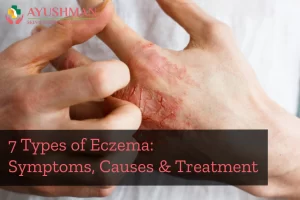Looking for a long-lasting solution to unwanted underarm hair? Armpit laser hair removal might be your answer. This cosmetic procedure utilizes laser technology to target and disable hair follicles, leading to a smoother, hair-free appearance. But before you dive into the world of lasers, let’s explore the ins and outs of this treatment.
Table of Contents
ToggleUnveiling the Benefits
Armpit laser hair removal offers a multitude of advantages over traditional hair removal methods like shaving and waxing. Here are some key benefits to consider:
- Long-lasting Results: Unlike shaving or waxing, which provide temporary relief, laser hair removal disrupts hair follicles at the root. This can lead to permanent hair reduction or significant thinning in the treated area. With a series of treatments, many individuals achieve a long-term reduction in underarm hair growth.
- Time Saved, Confidence Gained: Say goodbye to the daily chore of shaving! Laser hair removal frees up precious time you can spend on other activities. Additionally, the smooth, hair-free underarms it provides can boost your confidence and improve your self-image when wearing sleeveless clothing.
- Reduced Irritation: Shaving and waxing often lead to skin irritation, razor bumps, and ingrown hairs. Laser hair removal, by eliminating the need for scraping or pulling hair, can significantly reduce these common issues.
- Improved Hygiene: Underarm hair can trap sweat and bacteria, potentially increasing the risk of odor and infection. Laser hair removal helps maintain better hygiene by reducing hair growth in this area.
Preparing for Smoothness
Before embarking on your laser hair removal journey, a consultation with a qualified dermatologist or licensed practitioner is crucial. During this consultation, the doctor will discuss:
- Your Medical History: This includes personal and family medical history, any skin allergies, medications you’re taking, skin type, and hair growth patterns.
- Suitability for Treatment: Based on your medical background and skin type, the doctor will determine if laser hair removal is a safe and effective option for you. Certain medical conditions or medications may require adjusting before the procedure.
- Sun Exposure Minimization: Sun exposure can increase the risk of side effects like irritation and hyperpigmentation after laser treatment. The doctor may advise you to avoid sun exposure for several weeks beforehand and consistently use sunscreen on the treated area.
- Shaving and Medication Adjustments: Shaving the underarms before the procedure helps ensure the laser targets only hair follicles and reduces the risk of skin irritation. The doctor might also recommend stopping or adjusting certain medications before the treatment.
- Comfort Considerations: Loose, comfortable clothing is recommended for your appointment to minimize friction on the treated area. Additionally, avoiding alcohol and caffeine for a few hours beforehand can help reduce sensitivity during the procedure.
The Laser Treatment Process
The actual laser hair removal procedure is typically a quick and relatively painless experience. Here’s a breakdown of what to expect:
- Preparation and Positioning: You’ll be positioned comfortably on a table, and the treatment area will be thoroughly cleansed.
- Laser Application: The laser device will be used to target the hair follicles in your underarms. Most patients experience minimal discomfort during this process, although some may feel a slight stinging sensation.
Potential Side Effects and Recovery
While generally safe, armpit laser hair removal can cause some temporary side effects, including:
- Skin Irritation: Redness, swelling, and minor discomfort are common for a few days after the procedure.
- Pigmentation Changes: Temporary lightening or darkening of the treated area might occur, but this usually resolves on its own.
- Scarring and Blistering: These are uncommon side effects, but it’s important to discuss potential risks with your doctor beforehand.
Recovery from armpit laser hair removal is typically quick. Most people experience only mild discomfort and redness that subsides within a few days. Following your doctor’s post-treatment instructions, such as avoiding sun exposure and using sunscreen, is crucial for optimal healing.
Conclusion
Armpit laser hair removal offers a long-lasting solution for unwanted underarm hair. By understanding the procedure, its benefits, potential side effects, and what to expect, you can make an informed decision about whether it’s the right choice for you. Remember, consulting a qualified dermatologist or licensed practitioner is crucial to discuss your suitability for the treatment and ensure a safe and effective experience.
Frequently Asked Questions
Q1. Is laser hair removal safe for armpits?
A: Yes, laser hair removal is considered safe for the underarms when performed by a qualified professional. However, it’s important to discuss any concerns with your doctor before undergoing the procedure.
Q2. How much does it cost?
A: The cost of armpit laser hair removal varies depending on factors like the clinic’s location, the doctor’s expertise, the type of laser used, and the number of sessions required.
Q3. Will hair grow back after laser hair removal?
A: Laser hair removal aims for permanent hair reduction, but it’s not always a guarantee. Some individuals may experience regrowth after treatment, though the hair is usually finer and lighter in color. Maintenance sessions might be needed every 6 to 12 months to maintain smooth, hair-free underarms.
Q4. Is laser hair removal cancerous?
A: No, there’s no evidence to suggest that laser hair removal is cancerous. The procedure uses low-level laser energy to target hair follicles and doesn’t pose a cancer risk.
Q5. What happens if I stop treatment early?
A: If you stop laser hair removal before completing the recommended number of sessions, the untreated hair follicles may continue to grow, and you might not achieve the desired level of hair reduction.
Q6. How permanent is laser hair removal?
A: As mentioned earlier, laser hair removal aims for permanent hair reduction, but individual factors can influence its permanence. The hair may grow back finer and lighter, but some regrowth is possible. Maintenance sessions can help manage any regrowth.






